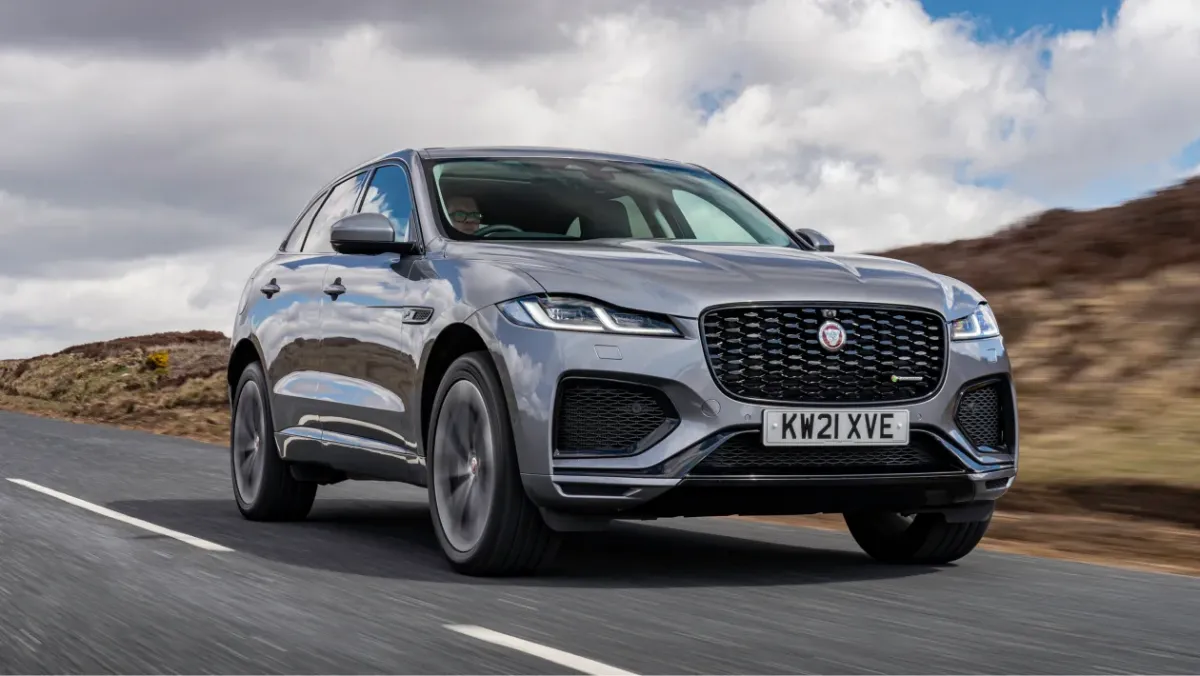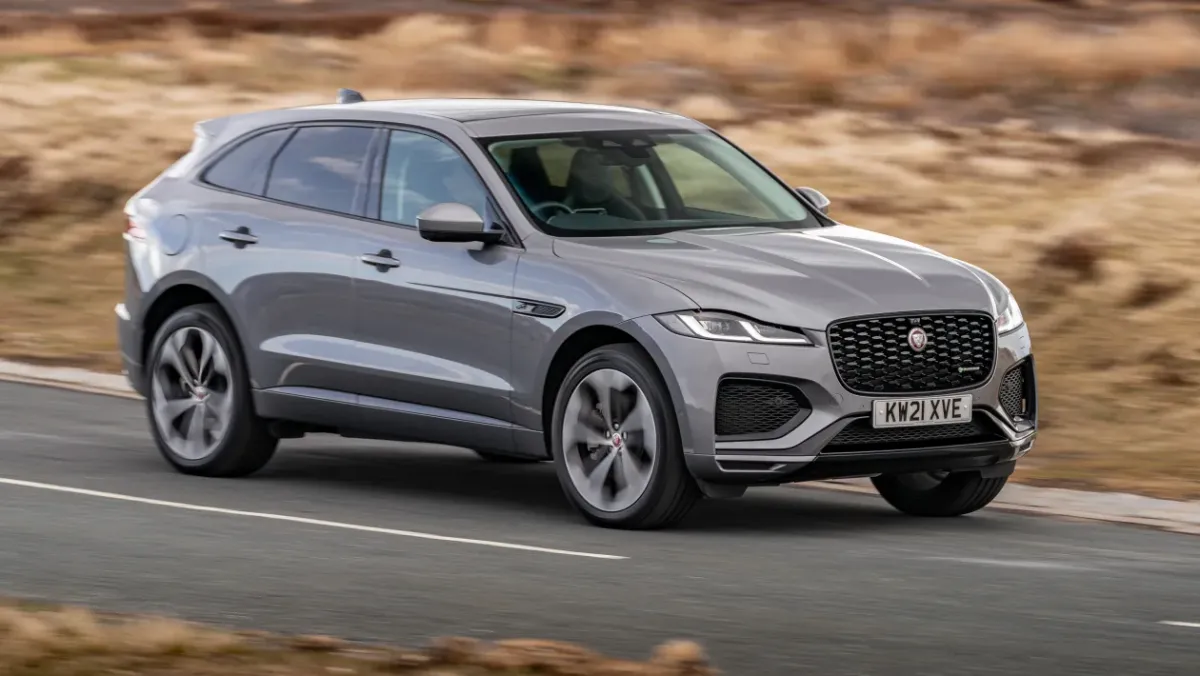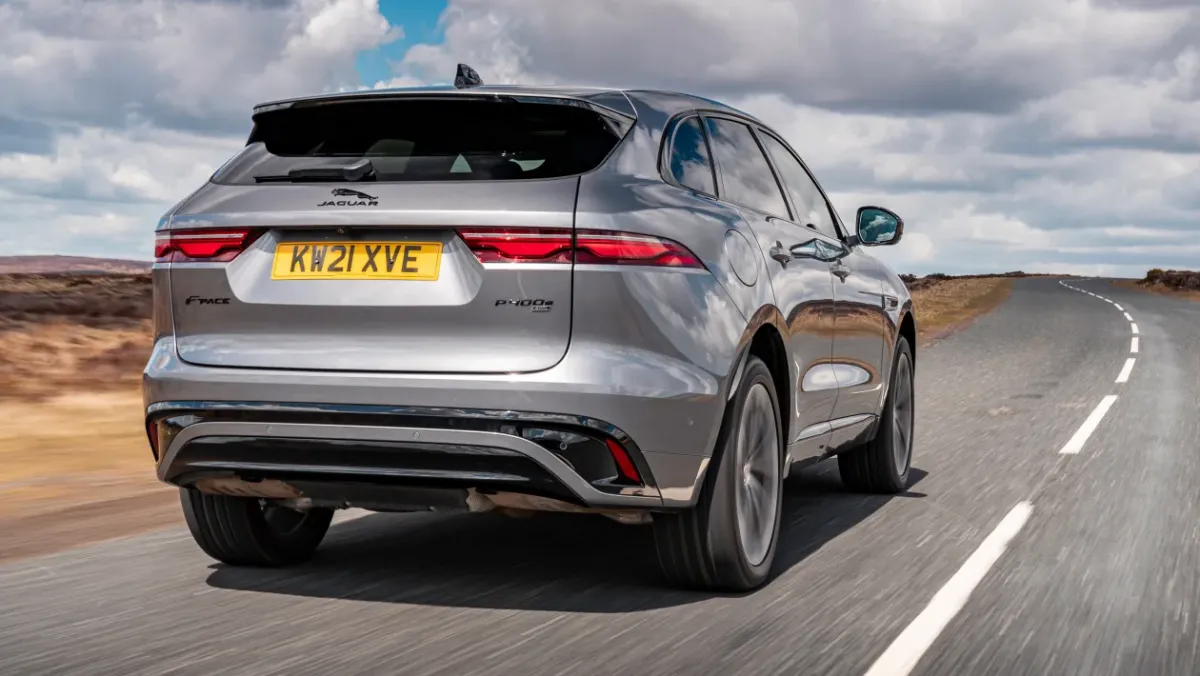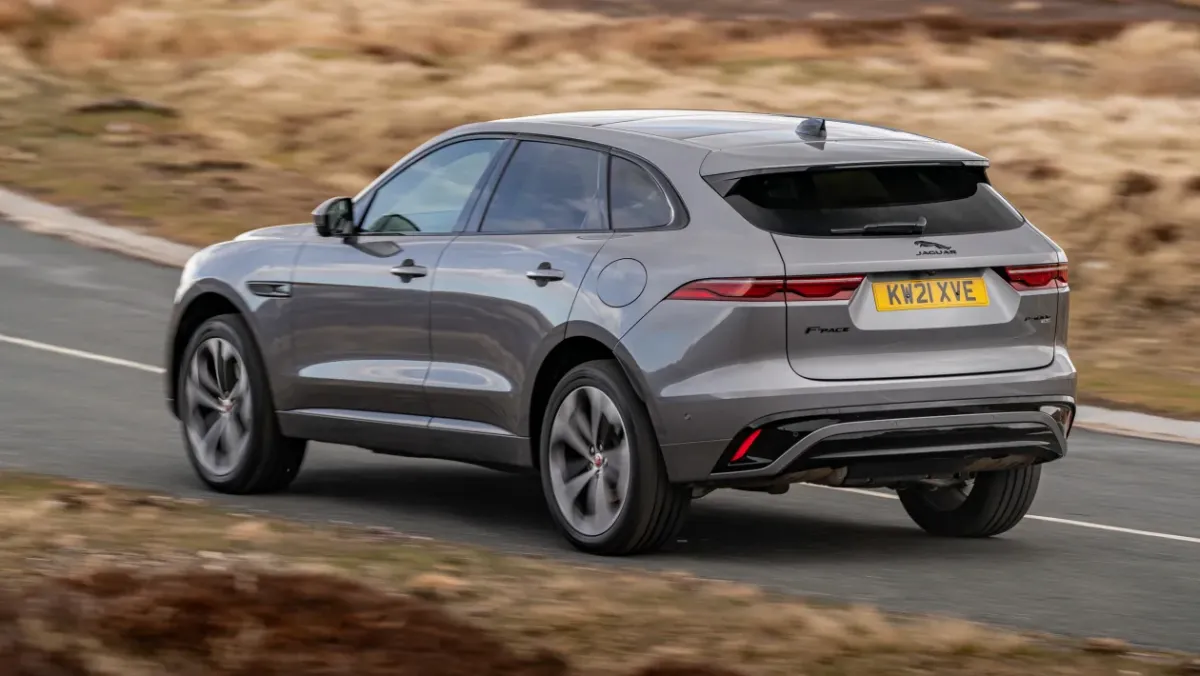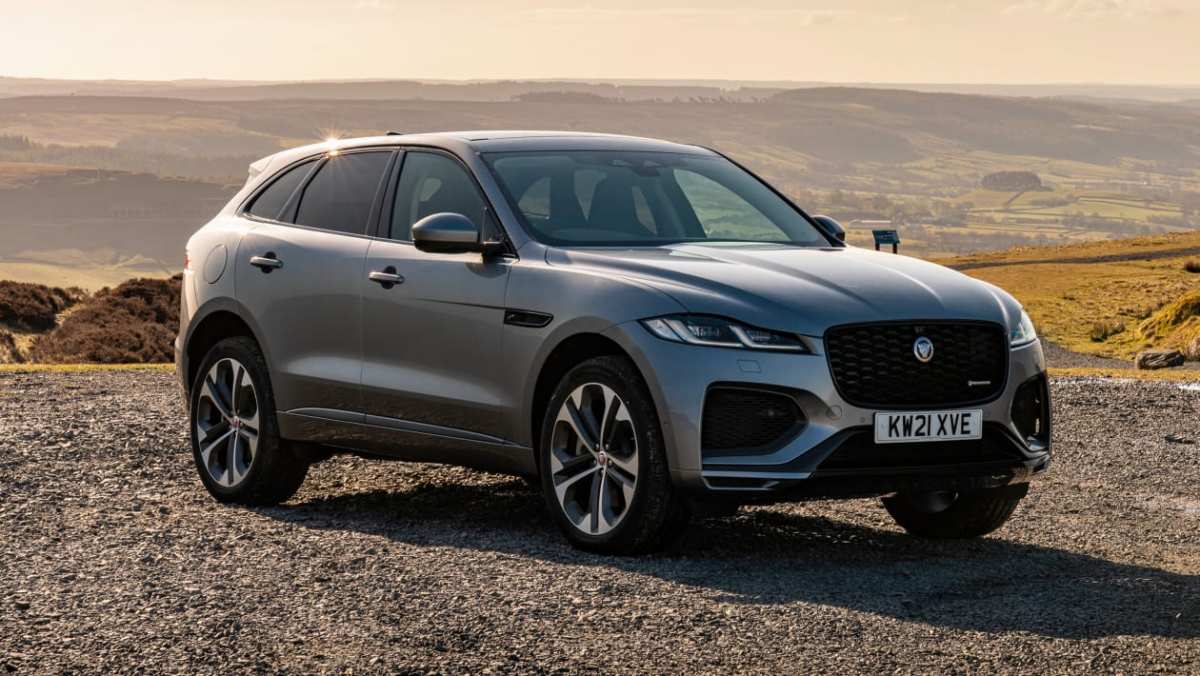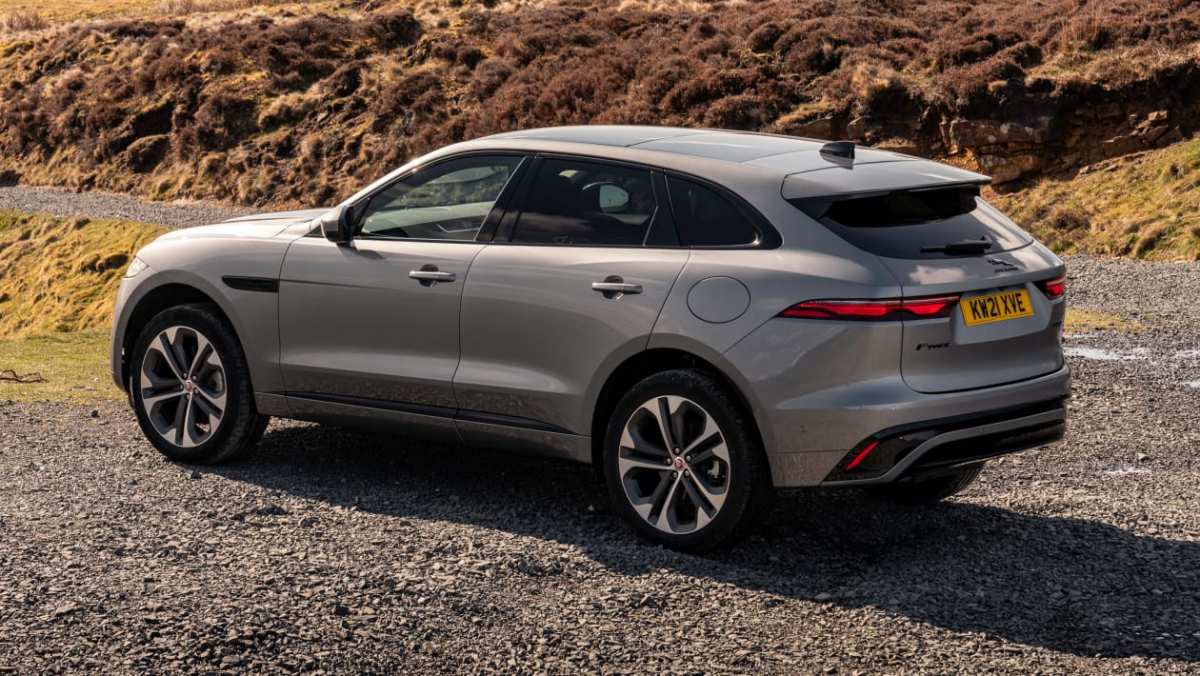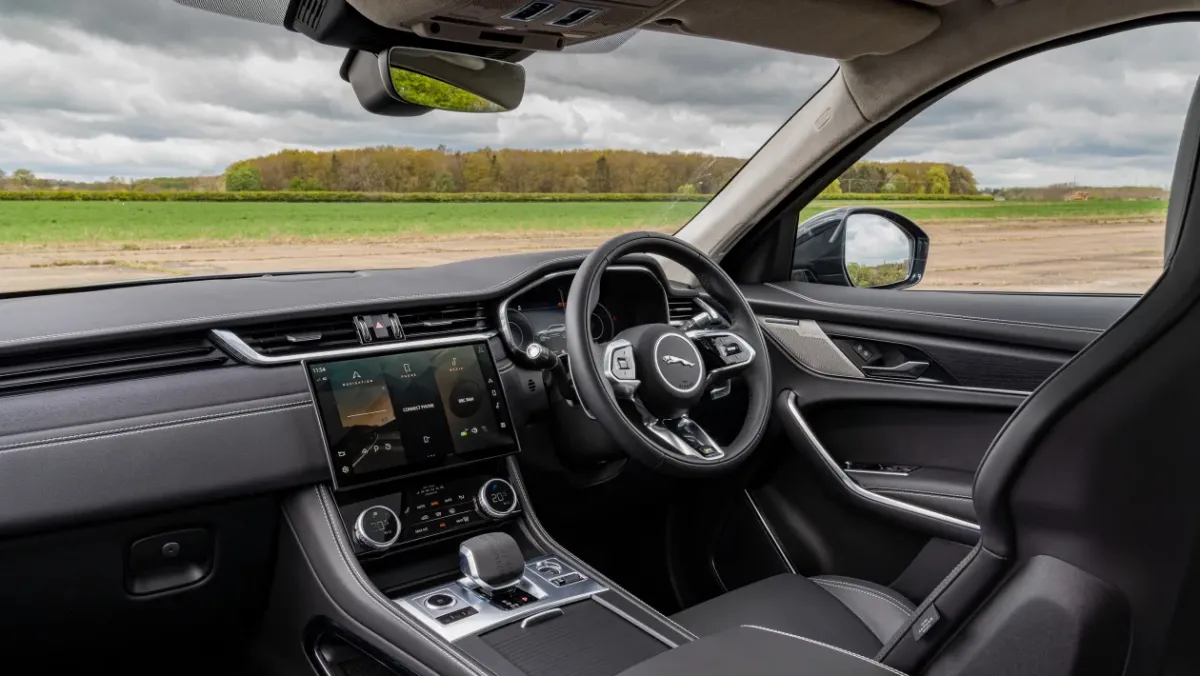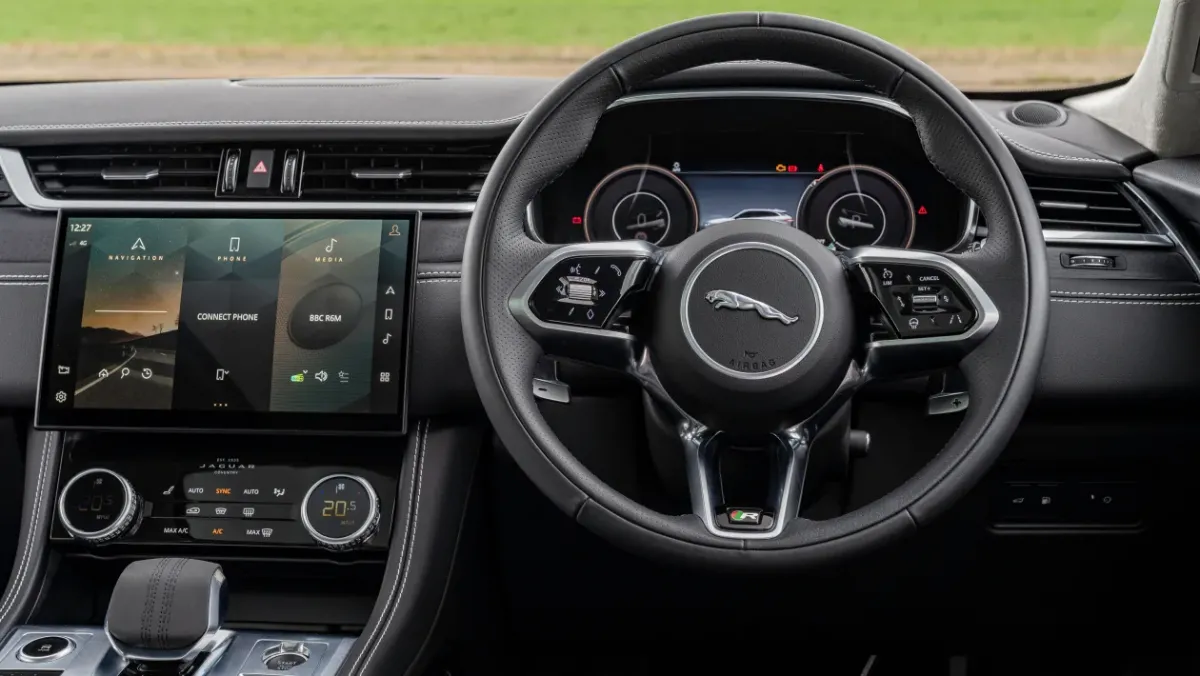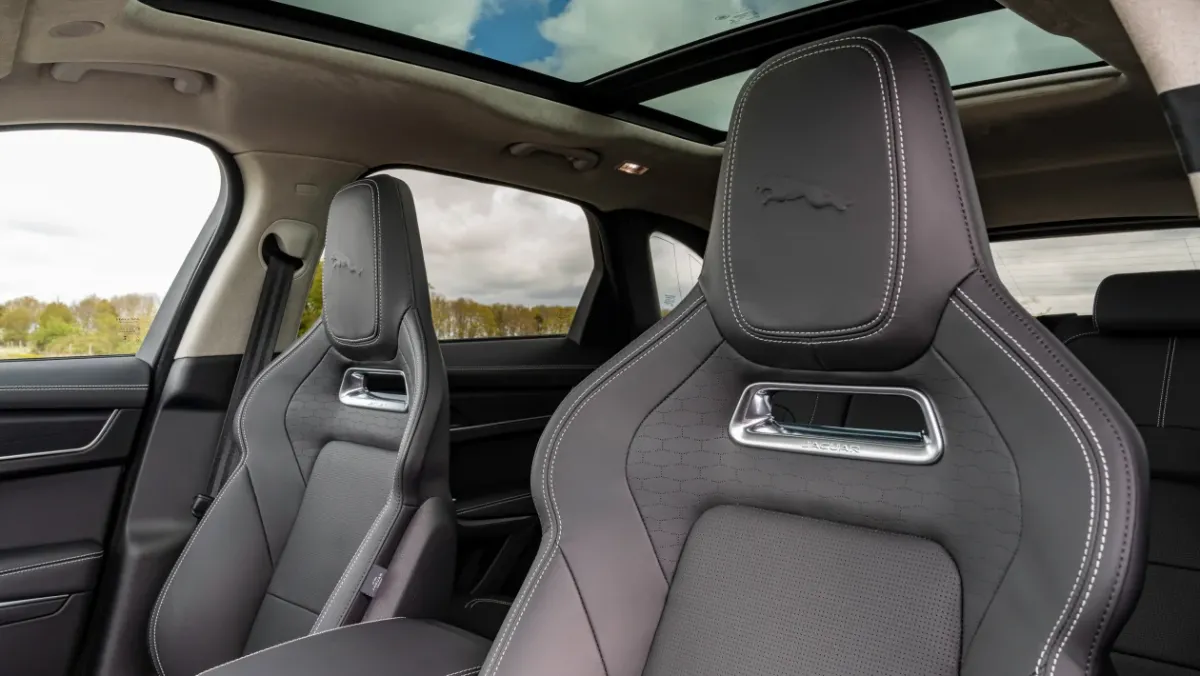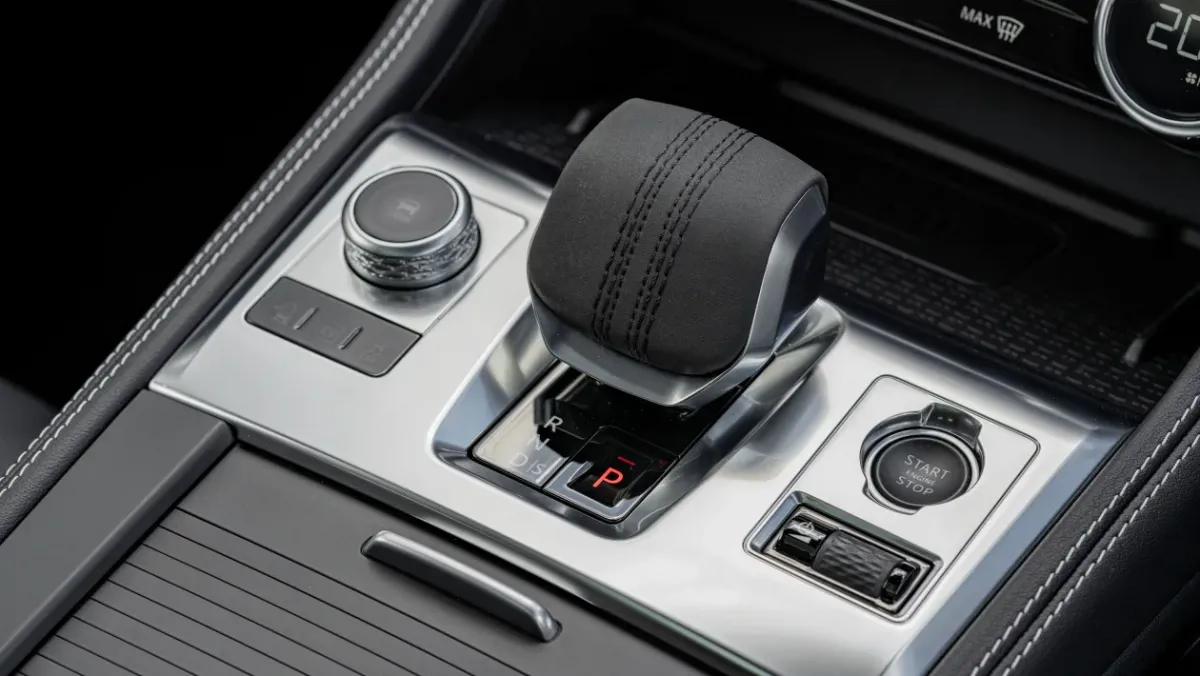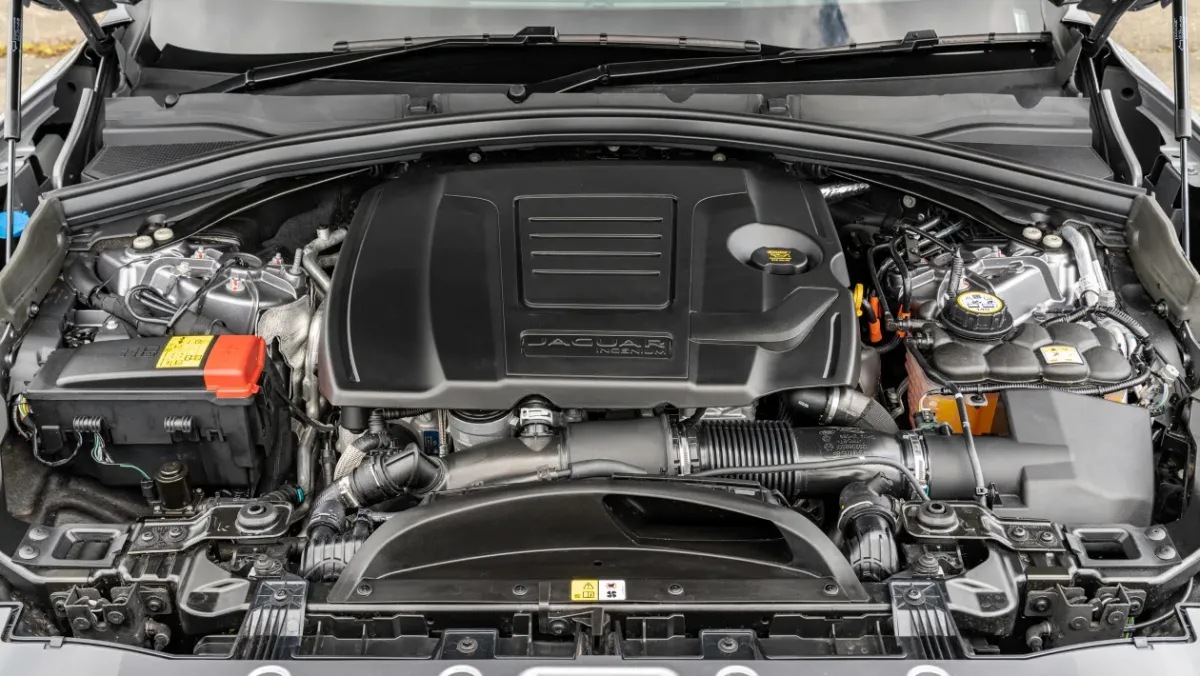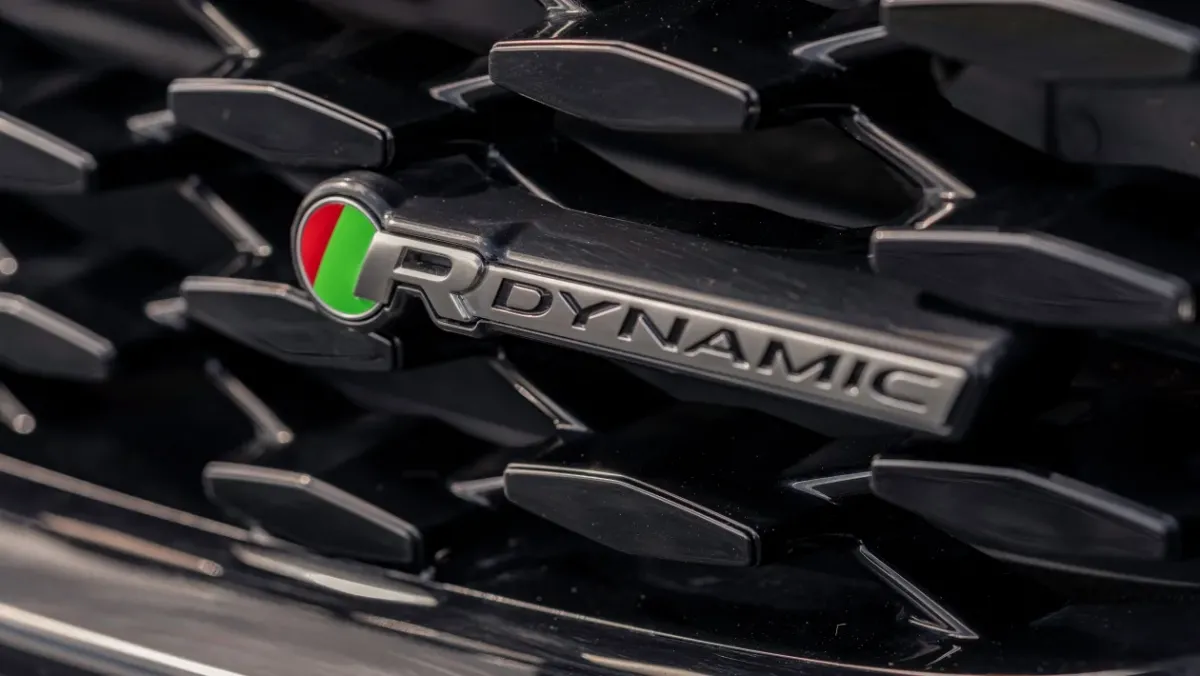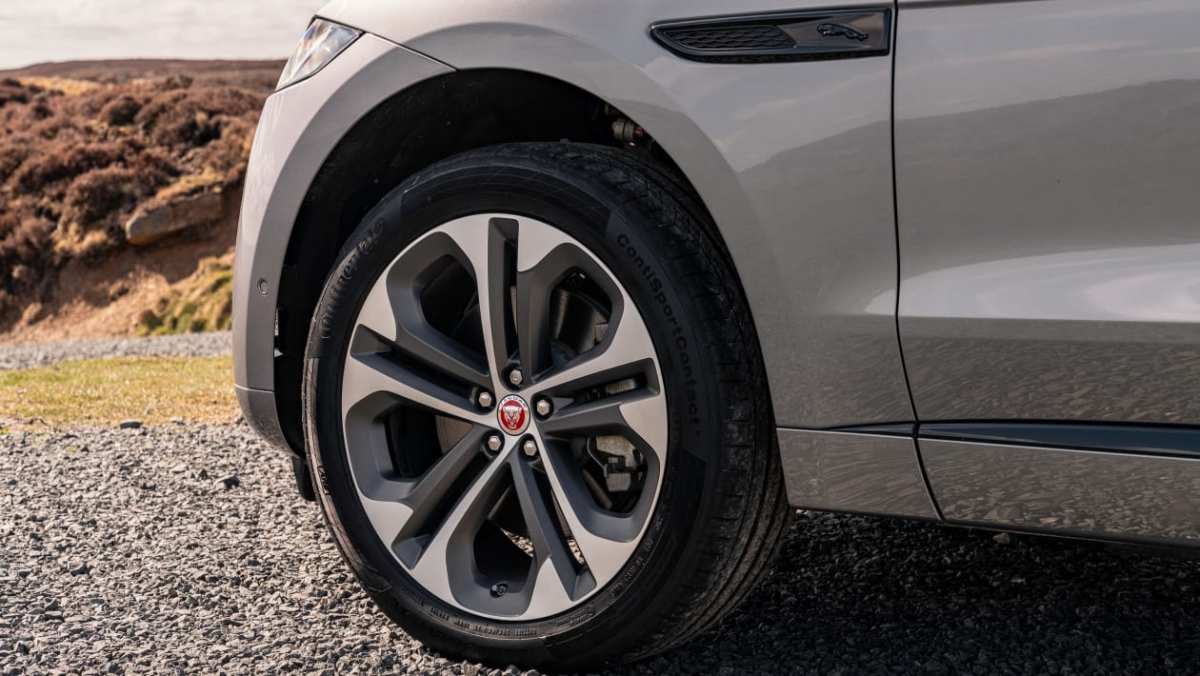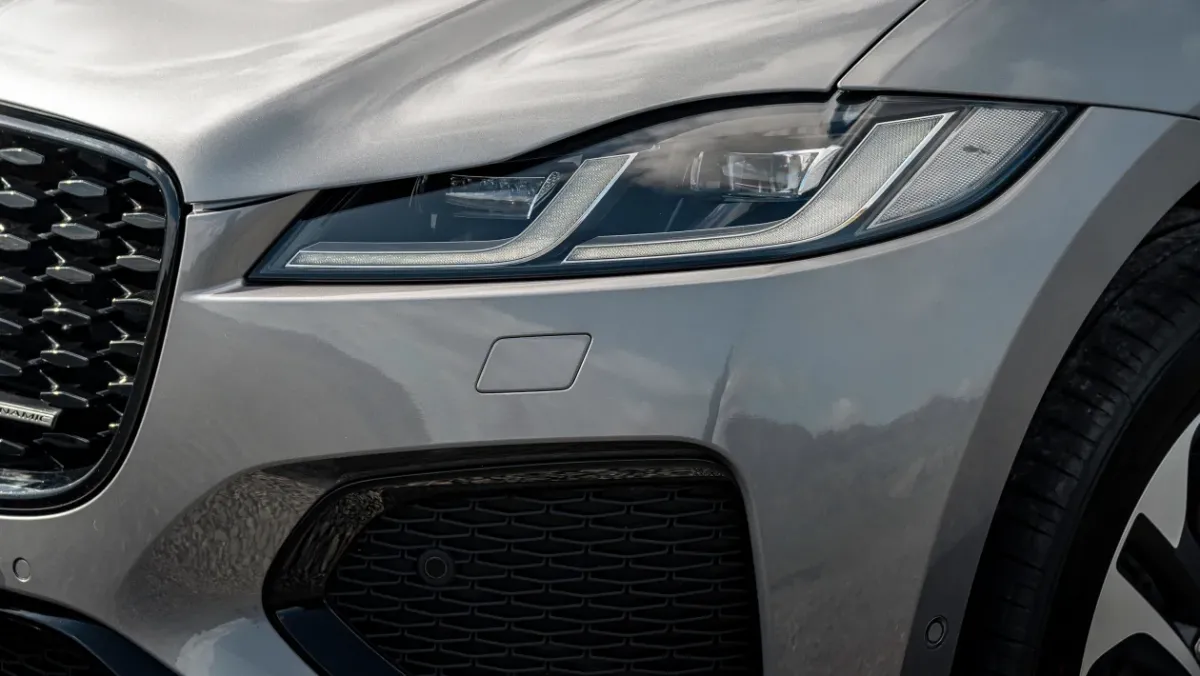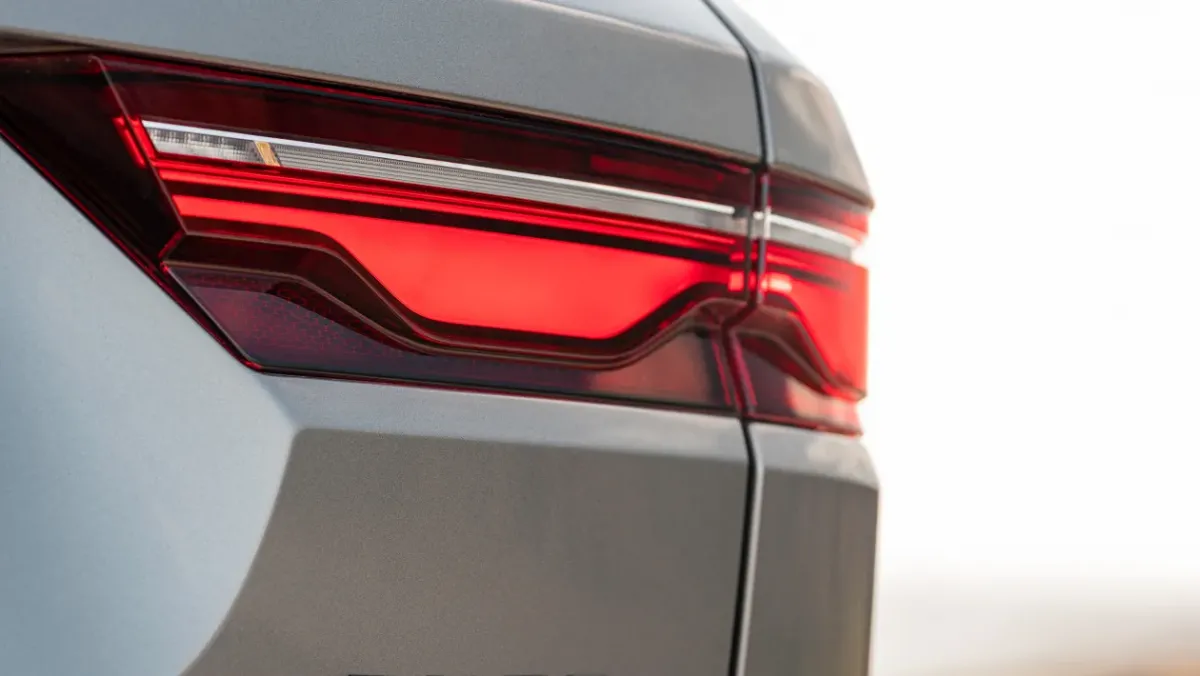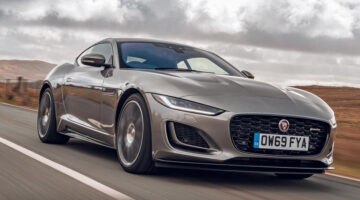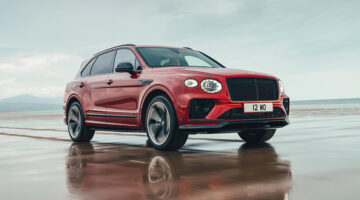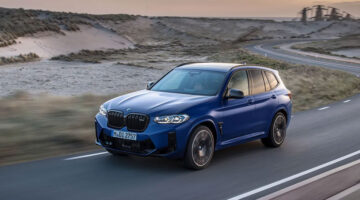The F-Pace has always looked and driven better than most of its rivals. Now it has the interior and tech to match, too
| Handling balance and steering precision, great new interior, still looks great | |
| Four-cylinder powertrains are a weak link, expensive at the top end |
Jaguar’s F-Pace has traditionally been one of the more composed and entertaining premium SUVs to drive, but such is the rate of progress that its light has dimmed since its 2017 launch. To keep its most popular model fresh, Jaguar set about giving it a pretty substantial update, and while from the outside it doesn’t look like much has changed, nothing could be further from the truth.
Under the new bonnet is an array of engine options that are even more varied than before, with mild- and plug-in hybrid assistance on a range of petrols and diesels. Not only that, Jaguar has also completely revitalised its interior and tech interfaces – all big marks against for the previous car, even from launch.
Combined with its excellent driving dynamics and sleek design, the F-Pace has never actually been more desirable, and with a range so varied as to offer a plug-in hybrid at one end and a fire-breathing 542bhp SVR model at the other, there’s no sliver of the premium SUV marketplace it doesn’t appeal to.
So Jag’s on to a bit of a winner, which is unfortunate for a few reasons as there’s no plan to directly replace it. Instead it will stand as a final flourish of brilliant engineering before the brand goes all-electric ahead of its 2025 relaunch. Still, right here, right now, the F-Pace is a very strong competitor in the segment with no obvious or deal-breaking flaws, making now an ideal time to enjoy this sort of combustion-powered Jag while we still can.
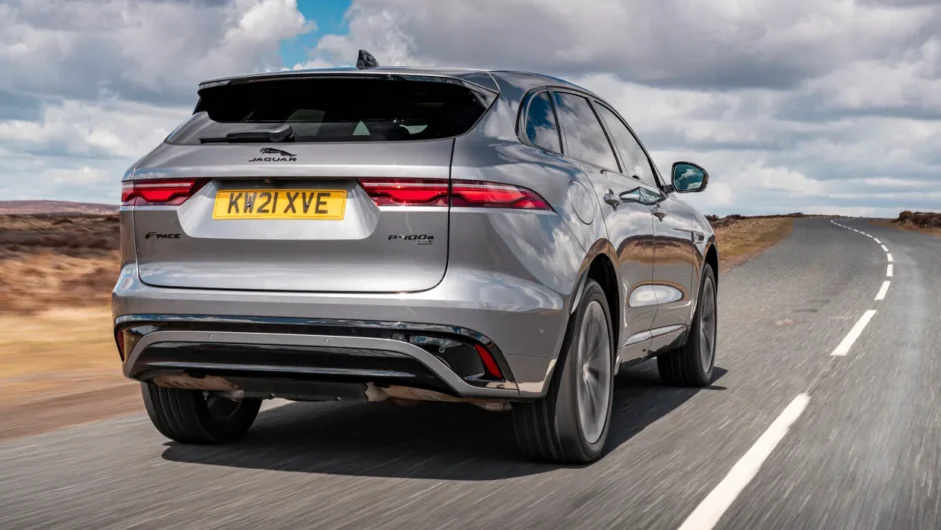
Prices, specs and rivals
The F-Pace might look similar to the model that was launched back in 2017, but the latest range has taken some pretty solid leaps under the skin, starting with the available range of engines that are almost completely renewed, but no less varied than before. There are six powertrain variants available (plus the supercharged V8 found in the SVR) made up from four- and six-cylinder petrols and diesels, with both mild- and plug-in hybrid assistance. All F-Paces come standard with all-wheel drive and an eight-speed automatic transmission too.
Diesel models feature a mild-hybrid system, with the 2-litre Ingenium available in D165 and D200 forms. Step up to the D300 and two extra cylinders will be thrown in. In terms of petrol options, there’s a P250 four-cylinder petrol, P400 straight-six mild-hybrid petrol and finally the P400e plug-in hybrid that pairs the turbo four with an electric motor and lithium-ion battery pack. The SVR still features a supercharged 5-litre V8 petrol, and is none the worse for it.
Each of these powertrain options are then available with either base or R-Dynamic design packages (six-cylinder models are R-Dynamic only), which are then split into different S, SE and HSE equipment levels. The result is a spread of prices that starts at $51,295 for a basic D165 S and goes up to $82,700for a P400 D-Dynamic HSE. The SVR is priced higher again at $98,575.
The good news is that these prices haven’t really risen significantly over the last couple of years, making the F-Pace comparable to the BMW X3 in price, rather than the X5 as it once was. All F-Pace models feature LED headlights, heated folding door mirrors, electrically adjustable and heated leather seats, a heated steering wheel, new Pivi Pro infotainment system accessed on the slick curved glass, parking sensors and a rear camera – we could go on. SE and HSE build on this with bigger wheels, higher-spec leather, bigger stereo options and more, alongside a further individual options list.
Rivals are numerous, and start with the Audi Q5, BMW X3 and Mercedes GLC – three big-name competitors that are neither as good to drive, nice to look at nor as luxurious inside. None of them is any better in the tech stakes either (shockingly), nor offers any appreciable lead in efficiency or standard equipment. The Porsche Macan and Alfa Romeo Stelvio are more on the Jag’s level in driving terms, both having the edge in outright dynamics, but with their own compromises, namely the Porsche’s thirsty engine range (no diesels or hybrids) and the Alfa’s basic interior design and underwhelming petrols.
Performance and 0-100 time
As is often the case with SUVs, performance on paper and in the real world depend more on torque than power. To this end, despite feeling like a dirty word, diesel is best in the case of the F-Pace, with the D300 being the pick of the engine range on account of its excellent performance, relative fuel consumption and refinement. In fact, it’s a superbly refined unit that only elicits a gentlest of six-cylinder growls at serious revs. Packing 479lb ft of torque, its 0-100kph time of 6.4sec sounds impressive enough, but on the road it feels a whole lot more well endowed, aided as it is by its BiSG.
Four-cylinder diesels aren’t as effortless, but maintain momentum perfectly well at high speeds without the need to draw on too many revs. Yet with a near two-second difference between the D165 and D200’s 0-100kph times (9.9sec and 8.0sec), we’d suggest finding the extra $2600 it’ll cost you. The P250 is quicker on paper (7.3sec), but has to work much harder to hit that number – likely using an appalling amount of fuel whilst doing so.
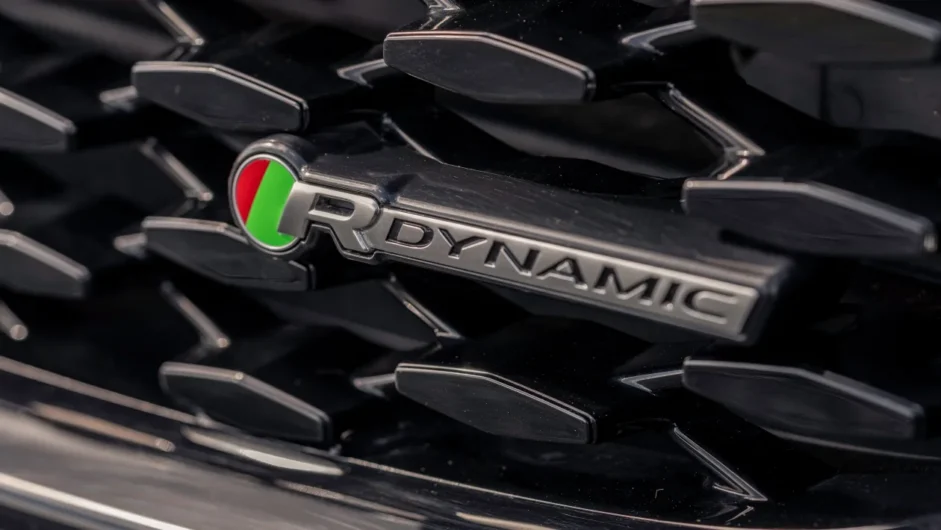
The P400 in-line six also isn’t particularly well-suited to its application in an F-Pace, as like the smaller petrol it needs to work hard to hit its official number (5.4sec). Its 406lb ft torque figure looks like it’s plenty of grunt for the job, but the transmission just doesn’t have the response it needs to get the most out of the engine when combined with the car’s 1953kg kerb weight. The P400e is the quickest F-Pace on paper, hitting 100kph in 5.3sec, but its extra 161kg makes it a more blunt driving tool, and more susceptible to negative effects on the driving experience. If engine-off running is a must, the P400e can do the job, but if your commute is longer than the national average then the D300 does the job better, while being better to drive at the same time.
SVR models have excellent performance, reaching 100kph in 4.0sec dead and going on to a limited 286kph top speed. While these numbers don’t quite hit as hard as those of a modern BMW X3 M or Alfa Romeo Stelvio Quadrifoglio, the SVR is a total hooligan on account of its brilliant V8 soundtrack and the relentless acceleration driven by that supercharger.
Engine and gearbox
There’s been some pretty big movers and shakers in the powertrain line-up as previously mentioned, but the technical aspects of what’s really going on under the F-Pace’s bonnet is more impressive than the figures might suggest.
Starting with the diesels (still projected to be the most popular choice of F-Pace), they have been synced up with Jaguar’s mild-hybrid system that utilises a belt-integrated starter generator (BiSG) which harvests energy under braking to later assist under acceleration and to optimise the start-stop system. Four-cylinder D165 and D200 models come with 161bhp and 201bhp, but the real star of the show is the 296bhp D300 straight-six which was introduced in late 2020. It’s part of the new series of Ingenium 6 engines that are found across the JLR range, and serve the F-Pace just as well here as they do in its larger and heavier Land Rover cousins.
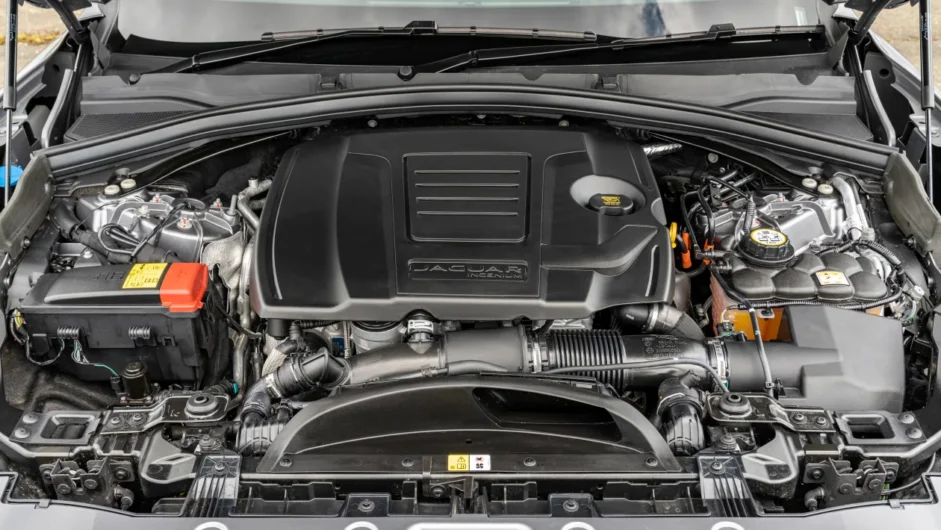
There’s a single 247bhp P250 2-litre turbocharged petrol engine which is, SVR aside, the only non-electrified model in the range. It’s a thirsty and relatively gutless engine that’s not really designed for Europe, feeling instead like an entry-level powertrain option for overseas markets. The P400 straight-six petrol has perhaps the most interesting mild-hybrid set-up of the range, though, as its system doesn’t just employ a BiSG, but also features an electrically powered supercharger that works in conjunction with the twin-scroll turbocharger. Its job is also to torque-fill before the traditional gas-driven turbocharger wakes up, but does this to much greater effect than just the BiSG on its own.
Yet despite its 394bhp and 406lb ft of torque, it still isn’t generally suited to the F-Pace on account of its thirst. The engine itself, however, is a brilliant unit, but we just can’t help but be disappointed that it won’t be found in anything more dynamically focused. Finally, there’s the P400e plug-in powertrain, which pairs the turbocharged four-cylinder petrol engine with a 105kW (141bhp) electric motor and 17.1kWh battery pack. Total system figures are 398bhp and 472lb ft of torque, but ultimately vary depending on system load and revs. Jaguar claims a combined all-electric range of 51 kilometers.
The PHEV’s layout is relatively simple, with the electric motor sandwiched between the engine and transmission, an inverter placed on one side of the gearbox, and the battery pack sitting underneath the boot floor. As with all F-Pace models, all the system power is routed through the one transmission and all-wheel-drive system, which retains its rear-biased and adaptive torque split.
The transmission used on all models is the same eight-speed automatic from ZF. The transmission is crisp, responsive and very clean between shifts. However, four-cylinder models retain a sense of inertia throughout the powertrain that makes it feel a little clunky. Six-cylinder models are more responsive, and feature transmission mapping that will give a little flourish of revs on downchanges and bursts of torque going up the gearbox.
The SVR’s supercharged V8 is unchanged, so while it may lack the full-house 567bhp of an F-Type R there’s still plenty of performance with 542bhp on tap. The only updates that have been applied to the SVR’s powertrain are confined to the gearbox, which has picked up new mapping software from the Project 8. Best not underestimate what otherwise seems like a subtle change, though, as it’s transformed the car, giving it some real attitude and panache that matches its superb chassis tuning. It might not be the newest or fastest high-performance SUV around, but the F-Pace is very, very close to the top of the pile.
Ride and handling
The F-Pace’s saloon-derived chassis is what defines the way it fundamentally drives, which is to say very well. Like most Jaguar products of this generation, its construction is mostly aluminium, with strategic use of high-strength steel in places, benefiting both structural rigidity and crash safety. However, overall weight for the F-Pace is equivalent to that of most rivals, ranging from 1822kg for the lightest P250 to 2114kg for the PHEV at its heaviest.
The suspension design up front is of a double wishbone design, paired with what JLR calls an integral link rear suspension design that provides improved stiffness across both longitudinal and lateral planes compared to a traditional multi-link set-up. Passive dampers are standard on all four-cylinder models, with adaptive units optional (these are standard on Ingenium 6, PHEV and SVR variants).
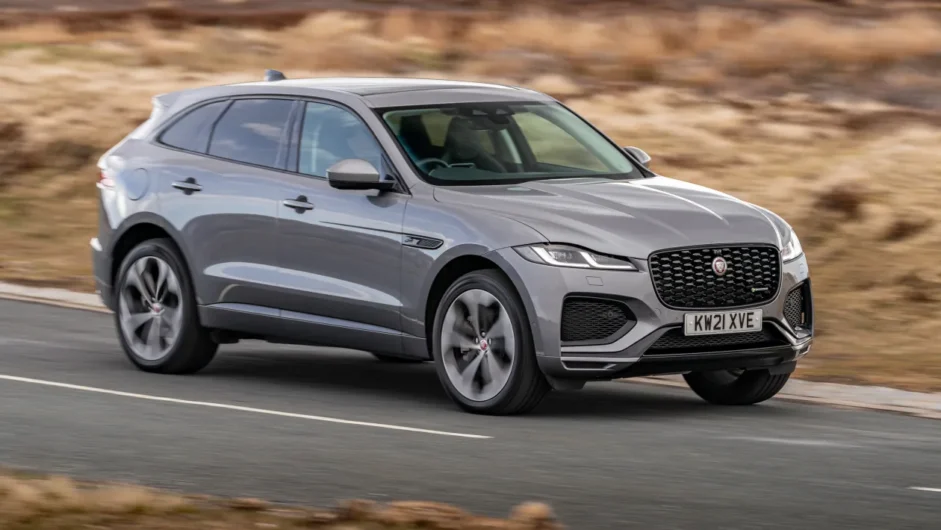
In general terms, the F-Pace drives very well for its size and stature. The chassis feels balanced and settled, and has a considered but not excessive amount of body roll that does a good job of feeding back the amount of available grip left on offer. It’s not quite the transparent sheet of cellophane that the XF is, but compared to most rivals it’s certainly one of the more sophisticated SUVs to drive. The overall ride quality is also very good on all but the largest wheel option, which can sometimes get tripped up on complex undulations and shudder on sharp impacts.
This ride quality is helped by the steering which feels superbly judged for local roads, with a calmer ratio than many modern rivals without feeling too languid or slow to react. Genuine feedback is generally hard to come by, but the steering’s accuracy and weighting as speeds rise make up for it.
Drive a little harder and the F-Pace’s character reveals more of itself, which is actually to the benefit of the driver, as this just highlights how fundamentally sorted the chassis is. Start really leaning into the suspension travel and the whole car finds another layer of polish. Front grip is excellent, and getting on the power nice and early reveals its ability to transfer its considerable weight cleanly and without losing composure. It’s even a little bit tail happy if your chosen powertrain has enough grunt to elicit it, revealing yet another layer of class that’s been dialled in from former JLR chassis wizard Mike Cross and his team.
With the exception of the Porsche Macan and Alfa Romeo Stelvio, it’s easily the best SUV in its class to drive, and while the Porsche probably has a touch more polish overall, its iron-grip body control doesn’t elicit much engagement unless you’re driving at some serious speeds. Alfa’s Stelvio, meanwhile, has the opposite problem, with super-quick steering that combines with a relatively low kerb weight to make it the most agile and hot hatchback-like. However, this agility sometimes goes beyond and can make it feel a little messy when just trying to find a fast flow.
SVR models stand out as their huge power reserves get the most out of the F-Pace’s chassis. Lateral control is at its finest here, and on the smaller 21-inch wheels it’s able to attack a challenging road with all the composure and engagement of something that’s considerably smaller. Its rear bias to the all-wheel-drive system is augmented further with a limited-slip differential, making any foray into power oversteer a predictable and highly satisfying exercise.
L/100km and running costs
Gone are the days when SUVs of any size were able to verge on 4.71 L/100km (on paper) like the original F-Pace did due to the old NEDC cycle, which means that despite having appreciable gains in efficiency over the years, the numbers might not immediately show it. Still, D165 and D200 four-cylinder diesel F-Paces are just about on a par for the class, with a 6.7-6.3 L/100km rating. This drops to 7.8-7.4 L/100km for the bigger six-cylinder D300. Petrol P250s are hit by their lack of any mild-hybrid assistance, hitting 10-9.4 L/100km, but the P400 somewhat makes up for it by only being a couple of mpg worse off at 27-10 L/100km.
Plug-in hybrid P400e models hit a claimed 2.2-2.1 L/100km, but as with all plug-ins the test cycle takes into account a full battery charge, which explains the sky-high figures. In the real world, if your daily commute is less than 50(ish) kilometers and you have a plug to charge it at every location it can be a very inexpensive way of getting around (high electricity prices notwithstanding). The plug-in also makes a case for itself as a company car, with much lower benefit in kind and company car tax to pay on account of its low CO2 figures.
The opposite might be said for the SVR, which has a rating of 12.3 L/100km– not bad, you might agree, for a near 2.1-ton SUV with a supercharged V8 engine, but enjoy that V8 and those numbers will rarely get close to 14 L/100km.
Another big expenditure will be tyres, especially if you order the optional 22-inch wheels. They might look great, but replacement 265/40/R22 Pirelli P Zeros cost approximately $380. Each. But broadly, the F-Pace has been a model of reliability over its lifetime, with powertrains and hardware generally remaining perfectly resilient, and even the electronics holding up well.
Interior and tech
If there was one main area the F-Pace needed an update it was the cabin, and, boy, did Jaguar listen for the mid-cycle update. The interior has been completely overhauled – new dash, console, door cards, technology and interfaces, they’ve changed everything up. And the good news is that it’s been a huge leap forward, with an elegant overall layout that’s also far more user-friendly to boot.
Dominating the dashboard is JLR’s new Pivi Pro system, accessible on an 11.4-inch curved glass display that floats on the front of the dash. The system is much, much easier to use than what went before, and while there’s no click-wheel interface, the large icons and clear menu structure make it easy to navigate on the road. The graphics are also top-notch, and the speedy response times more than make it a match for the latest systems found in rival models from BMW and Mercedes.
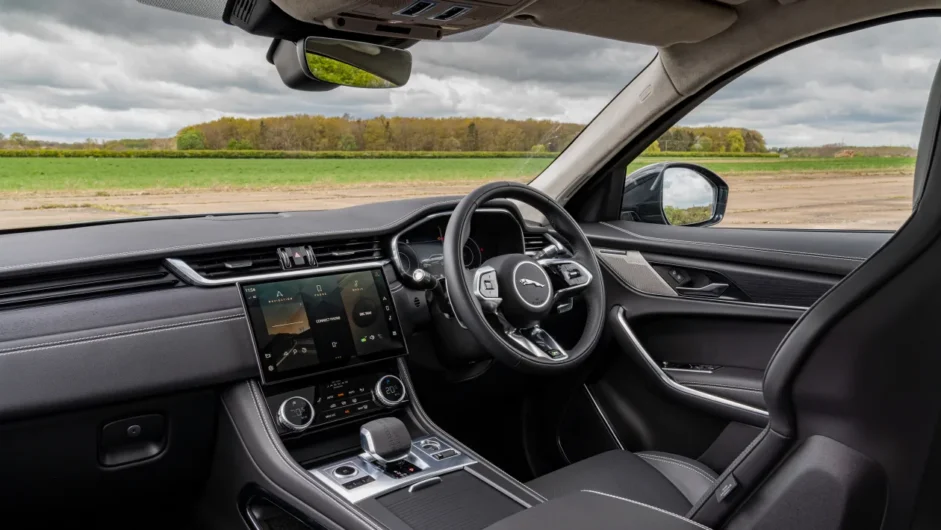
Beyond the new screen, dedicated rotary dials for the ventilation and heating, a very smart new steering wheel and new physical gear selector all add their own plus points. Overall use of materials is also much improved. However, the perceived quality does take a small hit thanks to the hollow feeling of that new gear selector and some of the secondary switchgear.
Another knock is the slow response time of the driver’s information display, and the head-up display still doesn’t work quite as well as on some rival cars, but overall the interior is an element of the car that would now certainly rank in the ‘pro’s’ column. In fact, the cabin is preferable to pretty much all the interiors of the F-Pace’s premium SUV rivals.
Design
The exterior design is perhaps where the F-Pace has needed the least amount of work since its original debut, and it looks like Jaguar has thought the same thing, as aside from some subtle reprofiling of the bumpers and lighting, the overall effect is much the same. That is a testament to the original design by Ian Callum and Julian Thomson, built on a foundation of fantastic proportions and timeless design signatures that have only needed a small update to stay fresh five years after its launch. In fact, thanks to a somewhat flat generation of new design from most premium manufacturers in this class, the F-Pace could be considered the best looking.
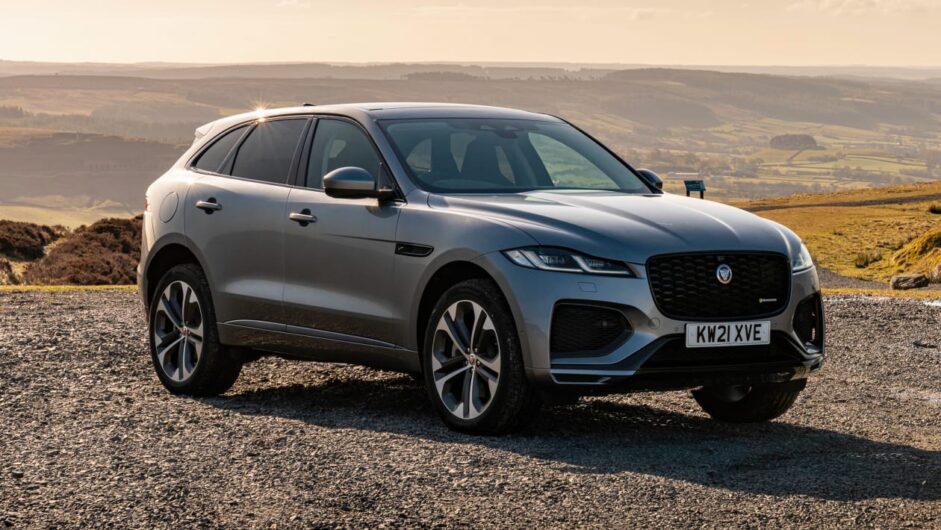
The new design elements are welcome though; the headlights are very similar to before with only their internal design reconfigured, but the rears have a much more confident graphic that also completely changes the night-time signature. The only weak spot would be the overly complex rear valance that makes the whole car look bigger due to the body colour looping down underneath the exhaust outlets.
There are new wheel designs in most sizes, and while the 22-inch option still offers that concept-car like stance, new 21-inch offerings (not previously available) draw a more finessed compromise between ride quality and aesthetics; their actual designs are also the most attractive.
Overall, its appearance is largely what will continue to draw buyers to the F-Pace, and in lieu of a new design language expected with Jaguar’s 2025 rebirth as an all-electric brand, it’ll have to stand the test of time. So it’s a good thing the last blank-sheet Jaguars were under the expert watch of Callum and Thomson. We’ll just have to wait and see what new overriding JLR design chief Gerry McGovern has in store for Jaguar’s next era.
This article originally appeared at evo.co.uk
Copyright © evo UK, Autovia Publishing

